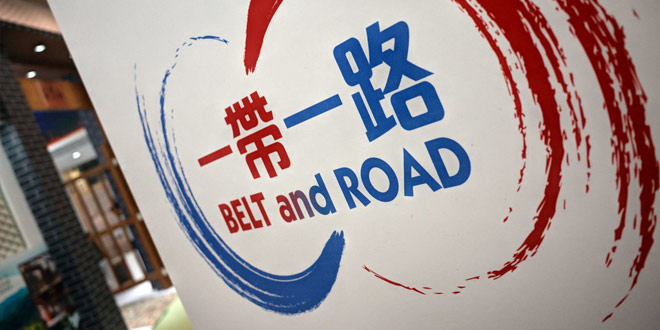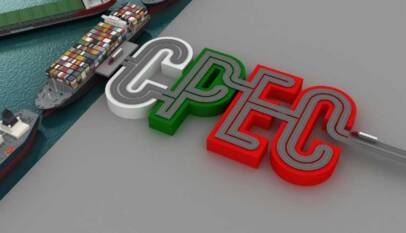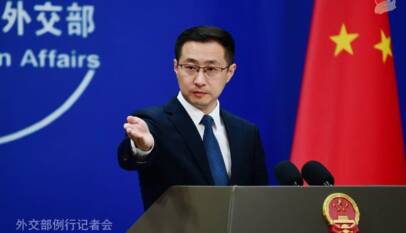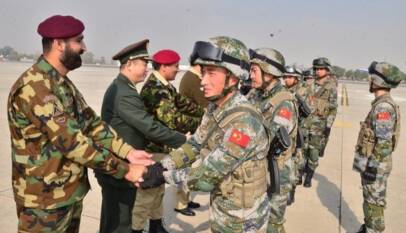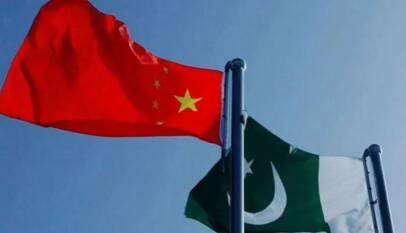CPEC: An Environment Enabler for Long Term Chinese BRI initiative
After battling with propaganda from all sides, a consensus has been finally made that CPEC is not just a road or port building project rather it's a phenomenon which will ensure that Pakistan will attract investment in the long run under the President Xi's vision of One Belt and One Road. Governments on both sides have started negotiations on the Long Term Plan (LTP) of CPEC. National Development and Reform Commission of the People's Republic of China and the Ministry of Planning, Development and Reform of the Government of Pakistan signed an agreement on November 21, 2017, on CPEC LTP. This national plan is also known as LPT 2017-2030. Under this classification, short term projects of CPEC would be concluded by 2020, medium terms would be finished by 2025, and long term will be carried out till 2030. The third phase of CPEC, starting from 2025, would likely to see the completion of Pakistan's industrial units' set up and would stabilise economic development while improving the standard of living in Pakistan. Only in 2030, it would be possible to measure the success of CPEC in promoting sustainable mechanism for economic growth in Pakistan and the region.
We started with the cliche “game changer” for CPEC. Within few years we came to conclude that CPEC was in fact a Trojan horse. Then our analysts gradually started to tell nation that CPEC was a failure and has already drowned between the gulf of mistrust between China and Pakistan. Then they added that this gulf was probably widening every single day due to terrorism and diplomatic advances made by Islamabad towards Washington. Soon media started to negatively discuss CPEC unraveling stories of corruption and mismanagement in some projects while courts in Pakistan were seen summoning Chinese companies for clarifications. It was like a deliberately designed plan manifesting itself as a campaign against CPEC. Unfortunately those advising the government in Pakistan also started to believe in such narratives. Soon it was declared that CPEC was dead.
The reality was quite different beyond the cursory view of arm chair economists and policy makers. It was simple, CPEC which was a regional test project as part of Chinese BRI (Bridge and Road initiative) which actually had not even started as yet in Pakistan. Our habit and cravings for short time gains made us to put 2017 as dead line for completion of CPEC projects. CPEC became premature delivered front loaded contract structure instead of a long term weaved strategic plan. Over optimistic planning with quick wins became the root cause for confusion.
President Xi Jinping’s visit to Pakistan in April 2015 gave a turbo charge to the Sino-Pak mutual motivation to push the projects already initiated. Nevertheless, but the acute economic needs of Islamabad soon swayed Pakistan to turn towards International monetary institutions, forcing it to advance a step or two towards Washington. As always, US promises came in a mix bag of carrot and sticks forcing Islamabad to dig deeper into CPEC goldmine.
Government was now realizing that CPEC was not just a road passage or a port development scheme but actually an environment enabler for long term Chinese OBOR initiative. As the realization started to set in, Pakistan and China once again decided to formally open up with a Long Term Plan (LTP) for CPEC.
On 21 Nov 2017, an agreement was formally signed on CPEC Long Term Plan between National Development and Reform Commission of the People’s Republic of China and Ministry of Planning, Development and Reform of the Government of Pakistan. The Plan was termed as a “national plan” which has formal approval of both Chinese and Pakistani governments. This national plan came to be known as LPT 2017-2030.
As per the agreed plan, short-term projects included were to be considered up to 2020; medium-term projects up to 2025; and long-term projects up to 2030.By 2020, both the governments agreed to give CPEC its initial shape while Pakistan would strive to address major challenges faced on economic and social development front. The economic growth would be indicator for success of CPEC up till 2025 which government of Pakistan formally announced as its “Vision 2025”.
In next phase i.e. by 2025, CPEC is expected to see a near completion industrial system, a more balanced economic development and improvement of people’s livelihood. In last five years of LTP i.e. by end of year 2030, CPEC is anticipated to witness a fully accomplished and functional mechanism for sustainable economic radiating its positive vibes in the region thus stimulating economic growth in Central and South Asia. By this time CPEC would transform the region into an international economic zone.
“Biological engineering for good breeding, disease prevention, land development to increasing production, water resources utilization could be few to develop local agricultural economy which will further help to reduce poverty”
LPT not only rejected the idea that CPEC was dead or dysfunctional but it also infused fresh blood in CPEC concept. Thanks to lukewarm response from Washington which forced Islamabad to realize that it cannot expect to improve its economy by mere banking on US promises of economic support. Islamabad repented its mood swings of putting CPEC on back-burner.
The CPEC LPT is affording Pakistan another chance to seize opportunities presented by China’s economic development, transformation and joint construction of the Belt and Road Initiative. Pakistan’s market, demographic dividend and geographical imperatives seemed important advantages available to be leveraged to receive benefit from China’s industrial, capital, and institutional advantages.
Pakistan and China through LPT are exploring the ways and means to boost information connectivity. Construction and operation of local communication networks and broadcast networks, development of road and rail infrastructure, upgrading of Pakistan’s network facilities, promote the ICT-enabled Pakistan are avenues of cooperation in this regard. Besides, LPT focuses at strengthening cooperation in the fields of energy generation, oil and gas, electricity and power grids, and focus on promoting the construction of major projects of thermal power, hydropower, coal gasi-cation and renewable power generation. China is also looking at joint ventures to actively promote river planning and preparatory work of major projects to accelerate the hydropower development process. With enough available energy and power generation capacity, Pakistan should be looking at expansion, enhancing both quantity and quality and value addition of the textile and garment industry. The 2017-2030 plan includes enhancing cooperation in sectors such as: chemical & pharmaceutical, engineering goods, iron & steel, light manufacturing & home appliances and construction materials not only to meet the demands of Pakistan’s local markets but further export it in the region as well as international market. Agriculture would be yet another important sector for cooperation. Biological engineering for good breeding, disease prevention, land development to increasing production, water resources utilization could be few to develop local agricultural economy which will further help to reduce poverty. Promoting monetary cooperation between the central banks of both countries is also on cards which will ensure establishment of financial institutions in each other’s countries to support the financing for the projects.
China and Pakistan are blessed with different gifts, and are at different stages of economic development. Pakistan possess a geo-strategic location, rich human and natural resources while China has advantage in technology for infrastructure construction and generating hugenesses for investment. This collaboration and galvanization of combined advantages are the actual benefits from CPEC. LPT 2017-2030 would not be an easy plan. Unstable geopolitical environment, disruptive factors such as security risks, restraints of natural and geographical factors, economic challenges particularly for Pakistan are few to be managed for success of this long term prospective cooperation.
Chinese Ambassador highlights significance of Third Plenary Session for China-Pakistan cooperation
The Third Plenary Session of the 20th Central Committee of the Communist Party of China ha…



